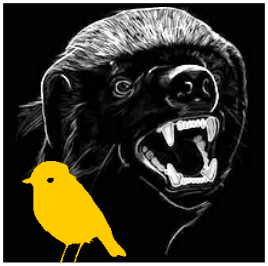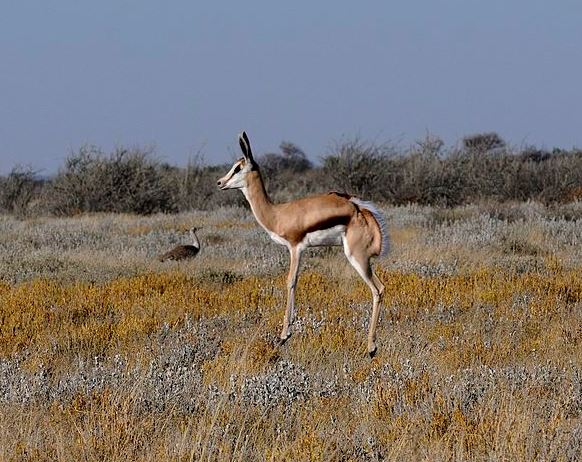The splashed colours of springbok contrast with an exposed habitat rather than blend into it. This conspicuousness aids herding and turns an inevitable visibility into a social advantage.

Prof. Mumblebard claims: “The dark flank-band of springbok breaks up the appearance of the animal so that it can blend into the background. In addition to this disruptive colouration, springbok have cryptic colouration because the white ventral surface aids countershading.”
Robin and the Honey Badger respond: “There are no disruptive or cryptic features in the colouration of adult springbok. Indeed, springbok are among the most conspicuous of large mammals and their dark flank-band increases their conspicuousness rather than reducing it. The flank-band is emphasised by an additional band of pale fawn above it and white below it. Also, the ventral white on the body of springbok extends on to the face, lower forelegs, rump, and mid-flanks – all of which are sunlit rather than shaded. The white on the sunlit flank not only defines the dark flank-band but also forms a highlight in its own right. Consequently, and contrary to the principle of countershading, springbok are advertised by a flank-band together with at least four other noticeably dark or pale features. Since springbok live in extremely open vegetation, disruptive or cryptic colouration would be ineffective. Instead, self-flagging enables springbok to detect their herd members as soon as they raise their heads, facilitating ‘safety in numbers’ from their many species of predators. Tonal contrasts are particularly helpful for mutual monitoring among herd members because the vision of springbok is more sensitive to movement than to hue and form.”

![]() “In other words”
“In other words”
Please join us here at the Bio-edge with your own comments. In the discussion below we encourage links to any evidence supporting either Prof. Mumblebard or Robin and the Honey Badger. Illustrations are welcome but please cite all sources or we may be forced under copyright to delete your comment.
***
Featured image: Springbok (Antidorcas marsupialis) by Hans Stieglitz (CC BY-SA 3.0, Springbok)

